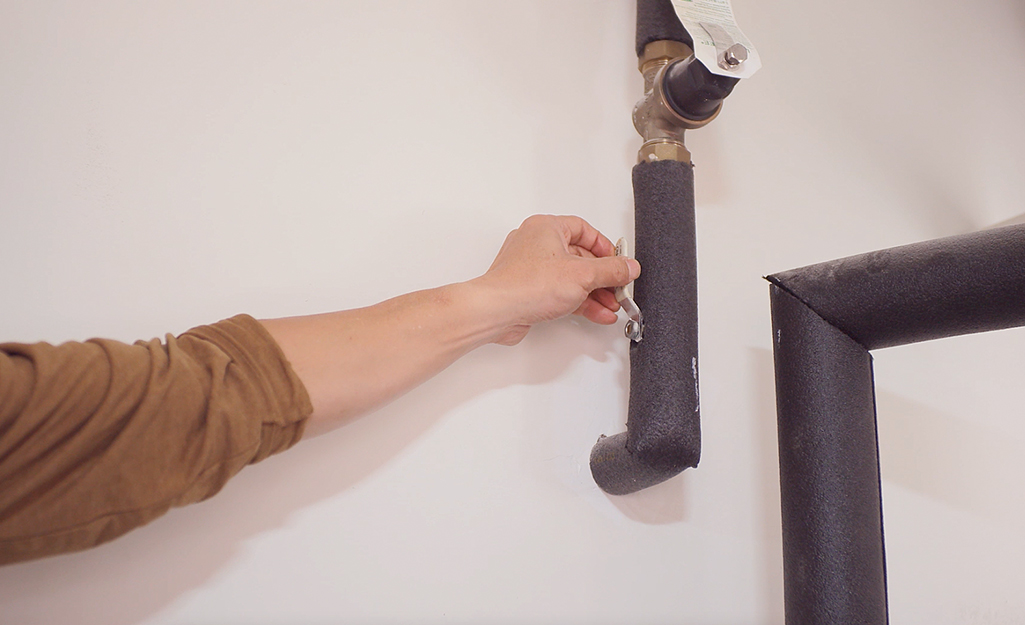Our Importance of Dealing with a Faulty Faucet
Our Importance of Dealing with a Faulty Faucet
Blog Article
They are making several great annotation regarding 4 Common Reasons for a Leaky Faucet in general in this article on the next paragraphs.

Leaking faucets could feel like a small hassle, yet their effect goes beyond simply the inconvenience of the sound. From drainage to incurring unneeded financial prices and health threats, disregarding a trickling faucet can result in different effects. In this post, we'll delve into why it's crucial to resolve this usual home problem promptly and efficiently.
Waste of Water
Ecological Influence
Dripping faucets contribute dramatically to water wastefulness. According to the Environmental Protection Agency (EPA), a single faucet dripping at one drip per second can waste more than 3,000 gallons of water per year. This not only stress water resources but also impacts communities and wild animals dependent on them.
Step-by-Step Guide to Dealing With a Dripping Faucet
Tools Required
Before trying to fix a leaking tap, collect the necessary tools, including a flexible wrench, screwdrivers, substitute components (such as washing machines or cartridges), and plumber's tape.
Typical Tap Issues and Their Solutions
Determine the sort of tap and the certain concern creating the drip. Usual troubles consist of damaged washers, corroded valve seats, or faulty O-rings. Refer to producer instructions or online tutorials for detailed advice on repair services.
Financial Expenses
Enhanced Water Bills
Past the environmental impact, trickling faucets can inflate water bills considerably. The collected wastage with time translates right into higher energy expenses, which might have been avoided with prompt repairs.
Prospective Residential Property Damages
In addition, extended leaking can lead to damage to fixtures and surface areas bordering the faucet. Water accumulation can trigger discoloration, deterioration, and also structural issues if left neglected, resulting in added repair work costs.
Health and wellness Worries
Mold and Mold Growth
The continuous visibility of dampness from a trickling tap develops a perfect atmosphere for mold and mildew development. These fungis not only compromise indoor air top quality yet likewise position health and wellness risks, especially for individuals with respiratory system problems or allergies.
Waterborne Conditions
Stagnant water in trickling faucets can become a breeding place for bacteria and various other pathogens, raising the danger of waterborne diseases. Impurities such as Legionella bacteria prosper in stationary water, potentially bring about major health problems when ingested or inhaled.
DIY vs. Specialist Repair
Benefits and drawbacks of Do It Yourself Repair
While some might try to fix a dripping faucet themselves, DIY repair services include their very own collection of difficulties. Without correct expertise and devices, do it yourself attempts can worsen the concern or bring about insufficient repair services, extending the issue.
Benefits of Hiring a Specialist Plumber
Working with an expert plumber guarantees that the underlying cause of the trickling faucet is addressed properly. Plumbings have the know-how and equipment to detect and repair tap concerns efficiently, conserving time and reducing the threat of more damage.
Ecological Obligation
Individual Contribution to Preservation
Taking responsibility for taking care of leaking faucets straightens with wider initiatives towards water preservation and environmental sustainability. Every individual's activities jointly make a considerable effect on protecting valuable sources.
Lasting Living Practices
By prioritizing punctual repair services and adopting water-saving practices, people add to sustainable living practices that benefit both existing and future generations.
Safety nets
Regular Maintenance Tips
To stop trickling faucets, do regular upkeep such as cleaning up aerators, examining for leaks, and changing worn-out components immediately. Furthermore, consider mounting water-saving devices or updating to much more reliable fixtures.
Value of Prompt Repairs
Resolving leaking taps as soon as they're observed prevents additional water wastefulness and potential damage, inevitably conserving both water and money over time.
Influence On Residential Property Value
Understanding of Well-Maintained Property
Maintaining a building in good condition, consisting of addressing maintenance concerns like leaking faucets, enhances its regarded worth and value amongst prospective buyers or occupants.
Influence on Resale Worth
Qualities with well-kept plumbing components, including taps, command higher resale worths in the real estate market. Resolving dripping taps can contribute to a positive impression throughout residential or commercial property examinations and negotiations.
Final thought
Resolving a dripping faucet surpasses plain convenience; it's a necessary action towards conserving water, minimizing economic expenses, and guarding health and wellness and home. Whether with do it yourself repair services or expert help, acting to take care of leaking faucets is a little yet impactful method to promote responsible stewardship of sources and contribute to a healthier, a lot more sustainable future.
How to Fix a Leaky Faucet: Step-by-Step Repair Guide
A leaky faucet may seem like a simple annoyance, but if it's not fixed promptly, that leak could cost hundreds to potentially thousands. From water damage to mold, mildew, and high water bills, even a tiny leak can be catastrophic if left unattended. Damage like this can even affect the overall value of your home, so it's important to take the right approach for leaky faucet repair. You may need the help of a plumber in some cases, but we've got a few tips you can try on how to fix a leaky faucet before calling the pros.
Four Faucet Types
When you're learning how to fix a leaky faucet, the first step is knowing what kind of faucet you're working with! There are four common types.
Cartridge Faucets
Cartridge faucets come in one- or two-handled varieties. In one-handled cartridge faucets, hot and cold water combines in a single cartridge. In the two-handled versions, hot and cold water are controlled separately and mixed in the faucet.
Ball Faucets
Ball faucets have a single lever you push up and down to adjust the pressure and rotate to change the temperature. A slotted metal ball controls the amount of water allowed into the spout.
Compression Washer Faucets
They're the oldest type of faucet, but they're still used in many homes — especially older ones. Compression faucets have two separate handles that, when turned, raise or lower the washer that seals a water valve. This valve stops water from flowing through the faucet when it is turned off.
Disc Faucets
Disc faucets rarely need to be repaired due to their maintenance-free design. The water flow is controlled by two discs — the upper one raises and lowers against a fixed lower disc, creating a watertight seal. If your disc faucet starts leaking, you may need to replace the seals or clean residue buildup from the inlets.
Fixing a Leaky Faucet
Step 1: Turn Off the Water
Whether you're learning how to fix a leaky bathtub faucet or how to fix a leaky kitchen faucet, always turn off the water supply to your working area when you're fixing a leak. The last thing you want is a flood added to your list of things to fix.
Look for the shutoff valves below your sink or around the tub and turn them clockwise to stop the water flow. If your faucet doesn't have shutoff valves, you may need to turn off the water for the whole house. Check to make sure it's off by turning the faucet on. If nothing comes out, you're ready to start the repair.
Step 2: Take Apart the Faucet
How you disassemble your faucet depends on the type of fixture you have. You can use a flathead screwdriver to remove the caps on top of the handle or handles for cartridge and compression faucets. Inside, you should see handle screws. Unscrew these with a screwdriver to remove the handle.
Disc- and ball-style faucets will typically have an inlet screw near the handle, and removing that will reveal the interior of the faucet.
Detach the Valve Stem
For cartridge- and compression-style faucets, you'll see the inner valve stem or cartridge once you remove the faucet handles. If you have a compression faucet, unscrew the brass valve stem. If you have a cartridge faucet, pull out the cartridge. If your cartridge has been in place for a while, it may require some tools or extra force to remove it due to mineral deposits.
Examine and Replace Parts
Once you've removed the parts, check them out to confirm what needs to be replaced. You may see corroded rubber washers, O-rings, stems, or cartridges. On a ball-style faucet, check the seats and springs for damage.
If you need to repair a leaky disc faucet, check the inlet and seals on the lower disc.
Once you determine what parts must be replaced, visit your local hardware store. Bring the damaged parts with you to ensure you can purchase the correct components to replace them.
Clean Valves and Faucet Cavity
If you've removed a stem or cartridge, you may notice mineral buildup in the faucet's threads. Use white vinegar to clean the valve seat by soaking it for a few minutes, then scrub it away with a soft toothbrush and rinse with warm water. You can also clean the interior of the faucet in the same way.
Reassemble the Faucet
Once your faucet is cleaned and the required parts have been replaced, it's time to reassemble it. Put the pieces back together and slowly turn the water supply back on. Doing this slowly is crucial because too much initial water pressure can damage the new hardware you've just installed.
https://homewarranty.firstam.com/blog/how-to-fix-leaky-faucet

We had been shown that editorial about Why It's Important to Fix Leaky Faucets from an associate on a different domain. Do you know another person who is fascinated with the niche? Take a moment to promote it. I treasure your readership.
Report this page